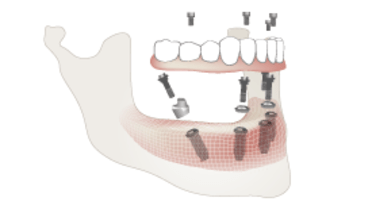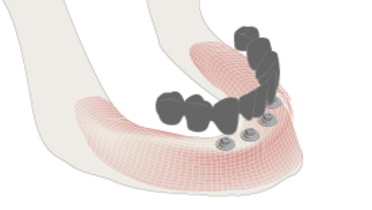-
0
Patient Assessment
- 0.1 Patient demand
- 0.2 Overarching considerations
- 0.3 Local history
- 0.4 Anatomical location
- 0.5 General patient history
-
0.6
Risk assessment & special high risk categories
- 5.1 Risk assessment & special high risk categories
- 5.2 age
- 5.3 Compliance
- 5.4 Smoking
- 5.5 Drug abuse
- 5.6 Recreational drugs and alcohol abuse
- 5.7 Parafunctions
- 5.8 Diabetes
- 5.9 Osteoporosis
- 5.10 Coagulation disorders and anticoagulant therapy
- 5.11 Steroids
- 5.12 Bisphosphonates
- 5.13 BRONJ / ARONJ
- 5.14 Radiotherapy
- 5.15 Risk factors
-
1
Diagnostics
-
1.1
Clinical Assessment
- 0.1 Lip line
- 0.2 Mouth opening
- 0.3 Vertical dimension
- 0.4 Maxillo-mandibular relationship
- 0.5 TMD
- 0.6 Existing prosthesis
- 0.7 Muco-gingival junction
- 0.8 Hyposalivation and Xerostomia
- 1.2 Clinical findings
-
1.3
Clinical diagnostic assessments
- 2.1 Microbiology
- 2.2 Salivary output
-
1.4
Diagnostic imaging
- 3.1 Imaging overview
- 3.2 Intraoral radiographs
- 3.3 Panoramic
- 3.4 CBCT
- 3.5 CT
- 1.5 Diagnostic prosthodontic guides
-
1.1
Clinical Assessment
-
2
Treatment Options
- 2.1 Mucosally-supported
-
2.2
Implant-retained/supported, general
- 1.1 Prosthodontic options overview
- 1.2 Number of implants maxilla and mandible
- 1.3 Time to function
- 1.4 Submerged or non-submerged
- 1.5 Soft tissue management
- 1.6 Hard tissue management, mandible
- 1.7 Hard tissue management, maxilla
- 1.8 Need for grafting
- 1.9 Healed vs fresh extraction socket
- 1.10 Digital treatment planning protocols
- 2.3 Implant prosthetics - removable
-
2.4
Implant prosthetics - fixed
- 2.5 Comprehensive treatment concepts
-
3
Treatment Procedures
-
3.1
Surgical
-
3.2
Removable prosthetics
-
3.3
Fixed prosthetics
-
3.1
Surgical
- 4 Aftercare
Trial placement
Key points
- The trial placement appointment is a significant step for first evaluation of and decision on the prosthetic design and is critical for successful edentulous patient care
- The tooth arrangement for trial placement serves as a guide for framework dimensions and shape
- Frameworks may be custom computer numerical controlled (CNC) fabricated from metal alloy or from zirconia
Trial placement - functional and esthetic evaluation
The trial placement appointment is a significant one for successful edentulous patient care. It will be the first time that dentist and patient can see what has been created in the laboratory; and a decision will then be one of acceptance, modification or change. Mutual satisfaction with the provisional waxed result regarding occlusion, function and esthetics should be reached before additional clinical steps are taken e.g. fabrication of frameworks or processing the prosthesis.
The tooth arrangement provides a tangible orientation index of the teeth’s spatial positions in relation to each edentulous arch – an essential step for designing a framework and the final prosthesis. This clinical visualization addresses both dentist and patient mediated esthetic and technical concerns. It employs the laboratory prepared provisional teeth arrangement on an articulator, thereby simulating jaw and teeth contact movement relationships and movement.
Framework trial placement for definitive prosthesis
An important consideration during the maxillo-mandibular relations and trial placement appointments relates to the planning of an implant fixed prosthesis, where the bulk of implant components and proposed framework must be accommodated in the context of interocclusal space. This may eventually affect teeth selection for these specific sites as well as framework design. Once the patient has approved the tooth arrangement, framework fabrication can begin. In comparison to cast techniques, CAD/CAM production provides advantages regarding precision, passive fit of the framework, and material selection. This is achieved by scanning the template of the proposed framework made in resin. The information from the scanning is used to design and fabricate the framework using a computer numerical controlled (CNC) milling process. The clinician has the option of choosing Titanium, a metal alloy, or zirconia as the framework material.


